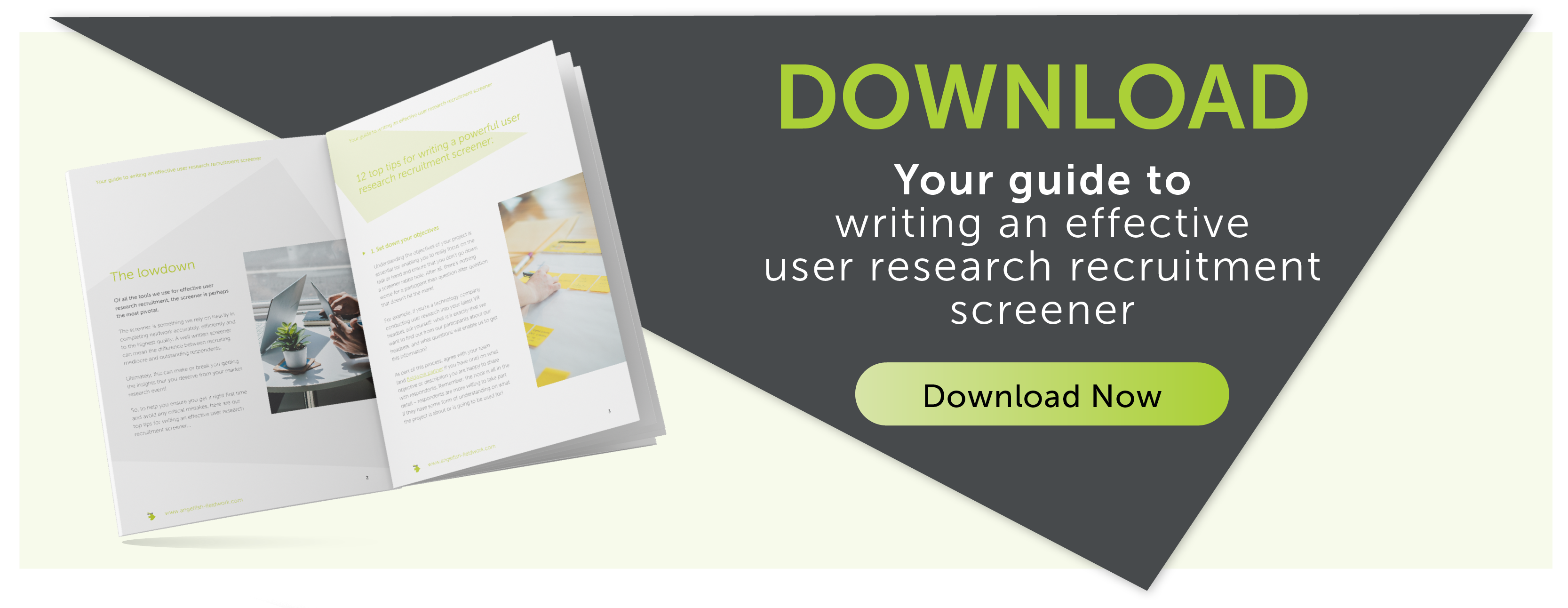
How to be realistic with your qualifying criteria for qual market research
How to be realistic with your qualifying criteria for qual market research
Qualifying criteria are used at the beginning of qualitative market research projects to identify potential respondents that can take part. Market research criteria generally comprise of a list of necessary qualities that participants need to possess to take part in the study; for example, you might be looking to survey women who are aged between 18-34 and living in London. To make sure that the respondents fit the necessary criteria, the researchers will ask screening questions to ensure only the best, most relevant participants are put forward. Basically, if respondents don’t meet the specific criteria, they won’t be able to continue the project – which means you can be confident you are recruiting the right type of people so that your research will generate the results you need.
Why use qualifying criteria?
There are a number of benefits to using qualifying criteria in your qualitative market research. Firstly, by ensuring only the most relevant participants are being put forward, you can lower recruitment costs and save a lot of time and effort when it comes to the interview stage as you won’t have to waste your time interviewing participants who aren’t relevant. Market research criteria can help you to pinpoint exactly who is the best fit for your research project, whether that is your existing customers, prospective target market or a subset of these individuals. For example, you could be looking at men who watch football, men who watch football and support Manchester United or men aged 30-35 who earn three million a year, watch football and support Manchester United whilst drinking Bud light in their townhouse in Trafford: the devil’s in the detail! Additionally, qualifying criteria can also help to eliminate respondent bias where a respondent can’t or won’t answer a question correctly.
Why is it so important to be realistic with qualifying criteria?
To put it simply, it’s important to be realistic with your qualifying criteria because you don’t want to cut off your nose to spite your face. While you want your respondents to fit your criteria, the more specific you are with your criteria, the smaller your pool of potential candidates will be. This could have a direct impact on both your timelines and your costs. You need to try and strike a right balance between the two and be specific enough that you aren’t wasting your time with unsuitable participants, yet flexible enough that you have enough right-fit participants to choose from to ensure you reach your research objectives. So, it might be that you end up looking at men who watch football and support Manchester United whilst drinking Bud Light, rather than going for the millionaires in their townhouses!

How to be realistic with your qualifying criteria
So, how can you be realistic with your criteria? If you’re struggling to strike a balance and find the best people for your research, these three tips can come in handy…
1) Prioritise your needs
By identifying the most important things within your criteria you can prioritise them and choose where to be flexible. By distinguishing between the essential and the ideal, you can strike the right balance, resulting in a valid yet decent sized pool of potential participants. For example, you might not be able to be flexible with the gender of the people you are choosing to interview, but could you broaden the age range and reach out to those Bud Light-loving football fanatics who are aged 30-50. There are always things you can tweak!
2) Assess your objectives
Assessing your objectives and picturing the final results enables you to decide what will make a difference to your qualitative market research and why. If you are being too specific about what you want to get out of your research, your costs will likely be higher as recruitment will take longer. Could you still get the results you need without being so specific about the age of your participants or how much your football fans earn, for example? If so, it’s time to change your criteria.
3) Review your methodology
You also need to look at whether or not your chosen methodology will impact your qualifying criteria at all. If you are conducting a focus group or face-to-face interviews, you could be limited in terms of location and only be able to recruit candidates in a certain geographical area. And when you add this to your chosen demographic, it can make response rates even lower. Ask yourself if there are any other types of methodology you could use such as online methods that won’t limit your location.
Need help with your criteria?
Getting your qualifying criteria right is absolutely essential for the success of a market research project. After all, not only will it help to make sure you take only the very best people through so you can generate high-quality results, but it will also help to ensure you meet the objectives of your research and make sure everything goes according to plan further down the line without any costly holdups. If you are about to embark on a market research project and are struggling with your screening questions or need some help with your market research criteria, download our guide to writing an effective screening questionnaire..














